#tocharian
Text
Tocharian
Around 3,000 BCE, speakers of an early branch of the Indo-European languages decided to go for a little hike, and wound up all the way in South Siberia.
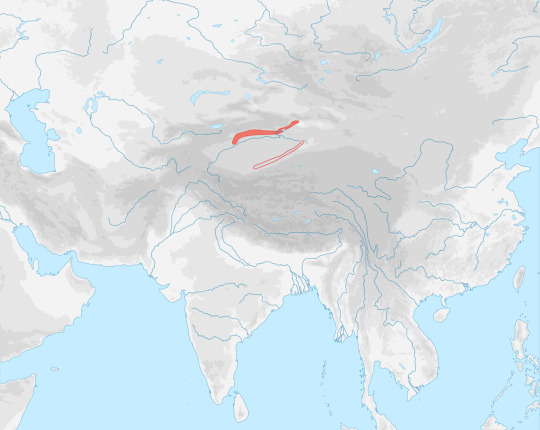
A few thousand years later, scholars discovered manuscripts in northwestern China dating to 500–800 CE that were shown conclusively to be written in a language from an early branch of Indo-European. They named this language Tocharian.

The discovery of Tocharian upset decades of research on ancient Indo-European languages and revitalized interested in them for two reasons:
Nobody even suspected that another branch of Indo-European existed, let alone in China’s Tarim Basin.
It was previously thought that the Indo-European languages were divided into eastern and western groups, based on whether the /k/ sound had changed to an /s/. The western languages that retained the /k/ were called centum languages (the Latin word for ‘hundred’, pronounced with an initial /k/), while the eastern languages with /s/ were called satem languages (the Avestan word for ‘hundred’). Yet Tocharian was a centum language sitting further east than almost any other language in the family. (Linguists later hypothesized that the centum-satem split wasn’t so much an east-west split as it was a spread of /s/ from the center of the language family outward, a change which didn’t reach the furthest members of the family).

Tocharian was written in a variant of Brahmi; here’s a sample of Tocharian script on a wooden tablet:

If you really want to challenge yourself, here’s a problem about Tocharian from the International Linguistics Olympiad:
#Tocharian#linguistics#language#historical linguistics#Indo-European#history#archaeology#China#Siberia#lingblr#langblr
252 notes
·
View notes
Text

Female Europid Mummy from the Necropolis of Subexi III, Grave M6, Turfan District, Xinjiang. 5th-3rd C. BCE. Source: Baumer, Christoph.The history of Central Asia. Vol.1. The age of the steppe warriors. London : I.B. Tauris, 2012. pg. 218 left DS329.4 .B38 2012. Image via University of Pennsylvania. See maps in the post before this one for a better understanding of the geography discussed.
"Section 26 – The Kingdom of Nearer [i.e. Southern] Jushi 車師前 (Turfan)
1. ‘Nearer Jushi’ 車師前 refers to the kingdom or state centered in the Turfan oasis or, sometimes, to the tribe which controlled it. There can be no question that Nearer Jushi refers here to the Turfan Oasis. See for example: CICA, p. 183, n. 618; also note 1.5 above. For the etymology of the name Turfan see Bailey (1985), pp. 99-100, which is summed up in his sentence: “The name turpana- is then from *druva-pāna- ‘having safe protection’, a name suitable for a walled place.”
“One other oasis town is currently under excavation. At Yarghul (Jiaohe), 10 km (16 miles) [sic – this should read 10 miles (16 km)] west of Turpan, archaeologists have been excavating remains of the old Jushi capital, a long (1,700 m (5,580 ft)) but narrow (200 m (656 ft)) town between two rivers. From the Han period they uncovered vast collective shaft tombs (one was nearly 10 m (33 ft) deep). The bodies had apparently already been removed from these tombs but accompanying them were other pits containing form one to four horse sacrifices, with tens of horses for each of the larger burials.” Mallory and Mair (2000), pp. 165 and 167.
“Some 300 km (186 miles) to the west of Qumul [Hami] lie [mummy] sites in the vicinity of the Turpan oasis that have been assigned to the Ayding Lake (Aidinghu) culture. The lake itself occupies the lowest point in the Turpan region (at 156 m (512 ft) below sea level it is the lowest spot on earth after the Dead Sea). According to accounts of the historical period, this was later the territory of the Gushi, a people who ‘lived in tents, followed the grasses and waters, and had considerable knowledge of agriculture. They owned cattle, horses, camels, sheep and goats. They were proficient with bows and arrows.’ They were also noted for harassing travellers moving northwards along the Silk Road from Krorän, and the territories of the Gushi and the kingdom of Krorän were linked in the account of Zhang Qian, presumably because both were under the control of the Xiongnu. In the years around 60 BC, Gushi fell to the Chinese and was subsequently known as Jushi (a different transcription of the same name).” Mallory and Mair (2000), pp. 143-144.
“History records that in 108 BC Turpan was inhabited by farmers and traders of Indo-European stock who spoke a language belonging to the Tokharian group, an extinct Indo-Persian language [actually more closely related to Celtic languages]. Whoever occupied the oasis commanded the northern trade route and the rich caravans that passed through annually. During the Han Dynasty (206 BC-AD 220) control over the route see-sawed between Xiongnu and Han. Until the fifth century, the capital of this kingdom was Jiaohe.” Bonavia (1988), p. 131.
“Turpan is principally an agricultural oasis, famed for its grape products – seedless white raisins (which are exported internationally) and wines (mostly sweet). It is some 80 metres (260 feet) below sea level, and nearby Aiding Lake, at 154 metres (505 feet) below sea level, is the lowest continental point in the world.” Ibid. p. 137.
“The toponym Turfan is also a variation of Tuharan. Along the routes of Eurasia there are many other place names recorded in various Chinese forms that are actually variations of Tuharan.” Liu (2001), p. 268."
-Notes to The Western Regions according to the Hou Hanshu. Second Edition (Extensively Revised and Expanded). John E. Hill. University of Washington.
#tocharian#celtic#indo european#tarim basin#xinjiang#chinese history#mummies#history#ancient history#archaeology#anthropology#silk road#pagan
458 notes
·
View notes
Text
Time Travel Question 22: Ancient History X and Earlier
These Questions are the result of suggestions from the previous iteration.
This category may include suggestions made too late to fall into the correct grouping.
Please add new suggestions below if you have them for future consideration. All cultures and time periods welcome.
#Crinoids#Time Travel#Paleozoic#Proto-Indoeuropean#Ancient Religion#Neolithic#The Land of Punt#Ancient World#Linguistics#Early Humans#Tocharian#Indo-European#Yuezhi#Chinese History#Tarim Basin#Steppe Nomads#The Bronze Age#Cretaceous#Pharaoh Hatshepsut#Ancient Egypt#Wu Zetian#Minoans
130 notes
·
View notes
Photo
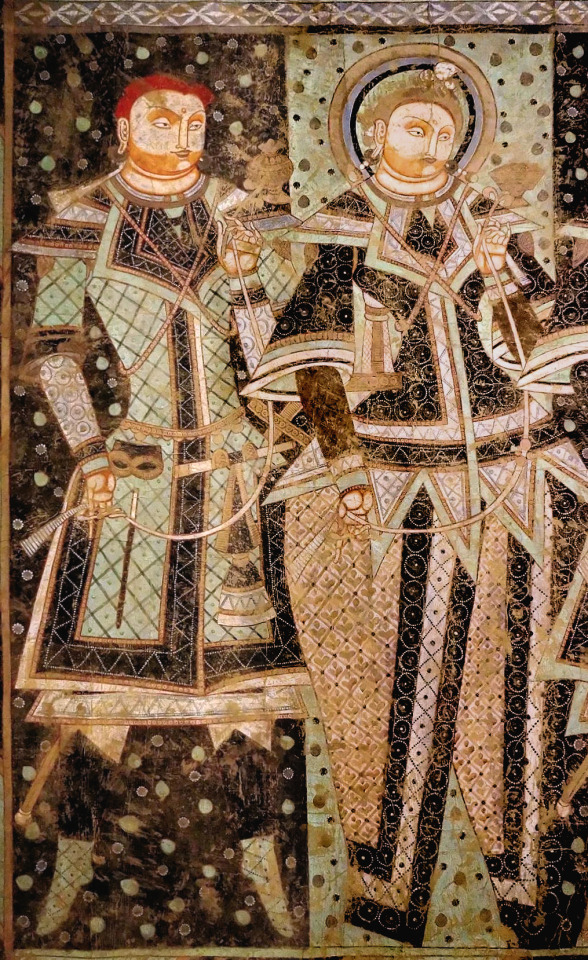

Tocharian donors, Kizil caves, 6-7th century
86 notes
·
View notes
Text
You can break whatever rules you want to on twitter as long as you do it in Tocharian
#linguistics#linguistic#languages#shitpost#linguist shitpost#lingblr#tocharian#indo european languages#indo european#twitter#;)#in minecraft
7 notes
·
View notes
Text

What are those two red lines in the Tarim Basin of what is now China? Source: Wikipedia
Those are the regions where Tocharian was once spoken, an ancient group of languages belonging to the Indo-European family, the same family that includes English, French, Greek, Hindi, and many others. A more proper term for these Tocharian languages might be “Agni-Kuči,” but current consensus generally opts for “Tocharian.”
These languages, of which there were three (aptly named Tocharian A, B, and C), went extinct upon the arrival of the Uyghurs sometime after 840 CE, when the latter group was driven from what is today Mongolia by the Kyrgyz people. The solid red zone in the image denotes Tocharian A and B, while the red outlined zone denotes Tocharian C.
The Tocharians themselves likely practiced Buddhism, having learned to write down their language from Buddhist monks somewhere to the south. Indeed, the Tocharian script is a direct descendant of the Brāhmī script, itself the direct parent system of such varied writing systems as Devanagari, Burmese, and Javanese.

An excerpt of the Tocharian script. Source: omniglot.com
The Tarim mummies also discovered in the area outlined above may be the remains of ancient Tocharian speakers, although the earliest mummies were buried about 1,000 years before the earliest attested inscriptions of Tocharian were written down. Recent genetic evidence suggests they were autochthonous to North Central Asia, though they were heavily influenced by surrounding cultures, likely including the Afanasievo peoples to the north. These Afanasievo peoples would have been a possible source for the Tocharian languages, as they are believed to have spoken an immediate offshoot, or perhaps dialect, of Proto-Indo-European.
Follow for more linguistics and share this post! If you have any questions, feel free to ask!
8 notes
·
View notes
Text
Cultural divides & disparities that are somehow still defined as “Hinduism”
The Vishnu-central Puranas, which contain the story of the churning ocean and golden egg, are associated with the Vaishnavite tradition of Hinduism. Later on, the emphasis from the golden egg switches to ‘Matsya’ a fish still associated with Vishnu who protects the Vedas. The churning ocean & golden egg myth is also found in Greek mythology. Further turtle creation myths are also found in ‘Native American’ and Chinese mythology, likely due to a Central Asian root.
MESOPOTAMIA: OLDEST ATTESTED CREATION MYTHS
Dating to the third millennium BCE, the Sumerian creation myth is called the "Eridu Genesis", the oldest attested creation story of the world. In this story, the god Enki creates humanity to serve as slaves for the gods, but later intervenes to save them from a great flood.
The universe is described as a vast, dark, and watery abyss known as "Nammu" (also the name for a goddess associated with water, incantations and protective water). From this primordial chaos, the god Marduk is said to have emerged and created the heavens and the earth. The myth describes a battle between Marduk and the chaotic forces of the universe, which Marduk ultimately defeats in order to create order and establish his own reign as the supreme god. The universe is therefore portrayed as a dynamic and ever-changing realm, with divine power constantly struggling against chaos and disorder.
Enuma Elish, a Babylonian creation myth, is one of the oldest surviving works of literature in the world, dating back to the 18th century BCE. The story is written on seven clay tablets, which were discovered in the ruins of the ancient city of Nineveh in modern-day Iraq in the 19th century. The Enuma Elish tells the story of the creation of the world and the struggles between the gods that led to their establishment of order and their dominance over the forces of chaos. The myth centers around the god Marduk, who defeats the primordial goddess Tiamat and creates the universe out of her body, and is elevated to the position of supreme God.
Similar to Mesopotamian mythology, in Shaivism and Shaktism, there is a vast, dark abyss or void that exists before creation. They also share the idea of a dynamic universe of creation and destruction. In Shaivism, this dynamic universe is often symbolized by the dance of Lord Shiva, which represents the continuous cycle of creation, preservation, and destruction. In Shaktism, the universe is seen as a manifestation of the Divine Mother's creative energy, which is constantly flowing and changing.
The creation of humans as a result of a union between a god and a goddess in the Eridu Genesis and creation is a one-time event. However, in Shaivism and Shaktism, humans are seen as an extension of the divine, created to experience and realize the ultimate truth and creation & destruction is cyclical. These differences may stem from later developments, such as in the Indus Valley (Melakam) or later, under Shamanic influences.
Samana or ‘Shramana’ traditions were more concerned with the nature of reality and the human condition than with the origins of the universe.
They do not feature a golden egg or turtles or other creation myths. Rather, their theories tend to focus on the cyclical nature of the universe and the laws of karma and rebirth, advocating personal spiritual liberation through meditation, ethical conduct, and renunciation of worldly attachments. There is no beginning or end to the eternal, infinite universe in the various Shramana movements.
In Jainism, there is a story of a cosmic serpent named Ananta or Shesha, who supports the universe on his hood further illustrating the Jain concept of the universe as eternal and infinite, with no beginning or end.
VAISHNAVISM
The turtle myth may have originated from a common ancestral mythology that was shared by different cultures across Eurasia and North America. The turtle myth may have originated from the ancient cultural and linguistic exchanges that occurred between peoples of the Steppes region of Central Asia and the surrounding regions.
The story of the golden egg is primarily associated with the Rig Veda and the later Puranas, particularly the Brahmanda Purana, and is not mentioned in the Matsya Purana:
According to the Matsya Purana, the creation story of the Matsya avatar begins with a demon named Hayagriva, who steals the Vedas (the sacred scriptures of Hinduism) from the god Brahma. To retrieve the Vedas and protect them from the demon, Vishnu takes the form of a fish and goes to the bottom of the ocean where the demon is hiding.
Once there, Vishnu reveals his true identity to the demon and engages him in battle. After a fierce fight, Vishnu kills the demon and retrieves the Vedas. However, while he is in the form of a fish, a great flood occurs, and the waters rise until they cover the entire earth.
In order to save the earth and all living beings, Vishnu instructs a king named Manu to build a large boat and to take aboard one of each species of animal and plant. Vishnu then pulls the boat through the flooded waters using his horn, which he has transformed into a rope.
As the flood recedes, the boat comes to rest on the top of a mountain, and Manu and the animals disembark. Vishnu then transforms back into his human form and appears to Manu, revealing the reason for the flood and the importance of preserving the Vedas and all living beings.
SHAIVISM & SHAKTISM
In Shaivism, the creation myth is generally associated with the god Shiva. According to one version of the myth, at the beginning of time, the universe was nothing but darkness and chaos. Shiva, in his role as the destroyer, performed the cosmic dance of destruction (Tandava) on top of a demon (Apasmara). This caused everything to dissolve into a state of emptiness. From this emptiness, a new universe began to emerge, which Shiva then helped to shape and give form to. Shiva is often associated with the concept of time, and is said to exist beyond time and space.
There are stories that mention the mountain Kailash as the abode of Lord Shiva, and the river Ganga (Ganges) flowing from the matted locks of his hair. In some Shaivite creation myths, the serpent Vasuki is also mentioned as playing a role in the churning of the cosmic ocean.
The five elements: Shaivite creation myths often describe the universe as being made up of the five elements: earth, water, fire, air, and ether. These elements are seen as the building blocks of all existence. The role of karma: Shaivite creation myths often emphasize the role of karma in shaping the universe. Good deeds are seen as leading to positive outcomes, while bad deeds lead to negative ones.Parvati, is often portrayed as the creative force behind his destructive power. In some Shaivite myths, she is even depicted as the primary creator of the universe:
In Shaktism, the creation myth is often associated with the goddess Devi or Shakti. According to one version of the myth, at the beginning of time, the universe was shrouded in darkness and chaos. The goddess Devi, in her form as the Great Mother, emerged from the emptiness and created the universe through her divine powers. Shakta creation myths often emphasize the importance of the feminine in the creative process. The goddess is seen as the embodiment of creativity, nurturing, and love. She is often associated with the power of creation, as well as the power of destruction and transformation.
Mount Meru is seen as the centre of the universe where Shiva & Shakti dwell - a place of spiritual power and enlightenment, where devotees of Lord Shiva often undertake pilgrimages to the mountain in order to seek his blessings. In Shaivite mythology, the guru plays an important role in guiding the devotee on the path to liberation, while in Shakti mythology, the goddess herself is often seen as the guru and guide. In Shaivite mythology, Lord Ganesha and Lord Murugan are important figures, while in Shakti mythology, the goddess Kali and the ten Mahavidyas are revered. In Shakti traditions, the worship of the goddess is often accompanied by rituals involving the use of intoxicants and blood sacrifice, while in Shaivite traditions, such practices are generally frowned upon.
Both Shaivism and Shaktism acknowledge the concept of cyclical time, in which the universe is created, sustained, and destroyed in a continuous cycle. Interestingly, Shakti mythology places a strong emphasis on power and energy, while Shaivite mythology focuses more on the idea of liberation and transcendence.
Other cosmic dance creation myths:
In ancient Greek mythology, the god Zeus was said to have danced the cosmos into existence.
In the Navajo tradition, the Holy People danced the universe into existence, with each dance creating a new part of the world.
The ancient Chinese myth of Pangu tells the story of a cosmic egg that hatches and forms the world. Pangu is said to have danced to create the separation of yin and yang and the formation of the world.
The Māori people of New Zealand have a creation myth in which the god Tane danced to separate his parents, Rangi and Papa, who were locked in a tight embrace and preventing the emergence of light and life.
#hinduism#steppes#turtle#creation story#mythology#turtle mythology#tortoise#turtles#ancient history#ancient civilizations#ancient civilization#tocharian#indigenous#native american#creation myth#creation#india#south asia#matsya#vishnu#vishnu purana#aryan invasion#dravidian#tamil#rig veda#puranic#puranas#matsya purana#eurasia#central steppes
3 notes
·
View notes
Text
How the Kushan Empire Spread Buddhism Via the Silk Road
How the Kushan Empire Spread Buddhism Via the Silk Road
Episode 6: Kushans, Sacae and the Silk Road
Barbarian Empires of the Steppes (2014)
Dr Kenneth Harl
Film Review
In this lecture Harl describes how the Tocharians, under pressure from the Xiongnu (who were under pressure from China) pushed the Sacae to migrate west and south.
Harl believes the Sacae were present on the central steppes from the beginning of the Iron Age (900-600 BC) and likely…
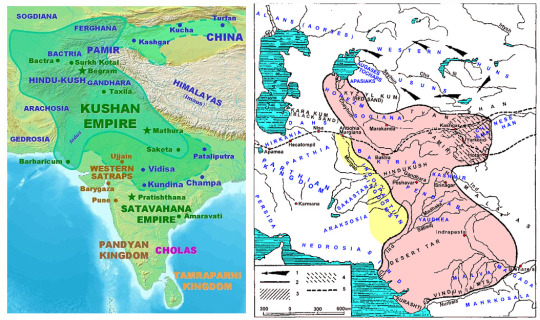
View On WordPress
1 note
·
View note
Text
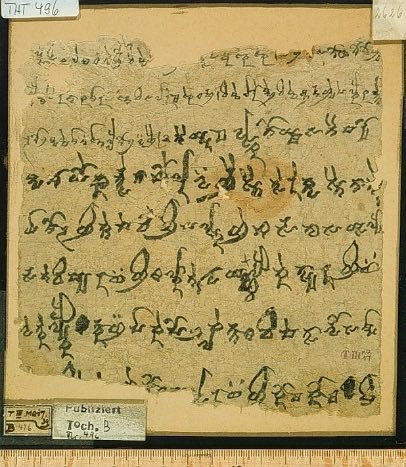
Tocharian B Love Poem, manuscript B496, 6th-7th C. CE
"…a thousand years, [you will] tell [our] story. [I thus announce, [here]tofore there was no human being dearer to me than [you]; likewise hereafter there will be no one dearer to [you] than [me]. [Your] love, [your] affection, [my] jubilant song rises up! Along with life [itself], this should not come to an end for [my] whole life. I was thinking: “I will live with one love well [for the whole of my] life, without any deceit, without…” The God [of Karma] alone recognized this, my thought. Thus he provoked a quarrel; it ripped out my heart [that belonged] to [you. I]t led [you] afar, it tore me apart, it turned me into a partaker of all sorrows; he took away the consolation [I had] in thee… my life, spirit, and heart, day-by-day…"
-Cf. the transcription and translation in J. P. Mallory and Victor H.Mair, The Tarim Mummies: Ancient China and the Mystery of the Earliest Peoples from the West (London: Thames & Hudson, 2000), p. 273.
#tocharian#indo european#literature#ancient history#history#ancient literature#xinjiang#ancient poetry#poems and poetry#love story
98 notes
·
View notes
Text
Eight brave ones
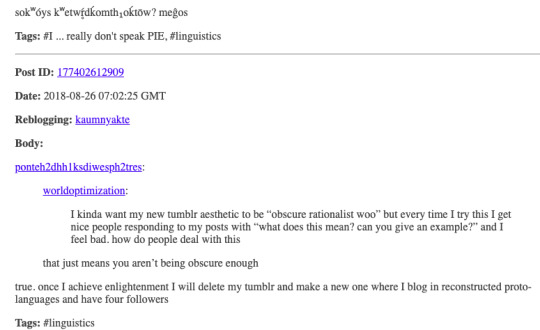
Dear Caroline:
I think I wrote before about my very limited acquaintance with proto-Indo-European (basically, just Mallory's book, and some bits and bobs that appear in Dumézil's digressions on the trifunctional hypothesis). In my second faculty there was a (relatively) young and nerdy lecturer who specialized in PIE, Hittite and Sanskrit, and I remember going to some classes of a course he gave as an introduction to Sanskrit. Still, we do have Chatgpt available now, which seems to translate the question and your answer as:
-"I speak for eight brave ones, with one mind in their hearts, in the house of the master, in the beloved home of the craftsman."
-Who says eight? Great
I am not as altruistically inclined as you, so given enough money that I wouldn't have to work, and perhaps a couple hundred years, I would probably devote a large chunk of that time to mastering mathematics to an absurd degree, along with Classical Greek, Latin, Chinese and Persian. And I might be tempted to study enough reconstructed protolanguages to get to be one of your four followers.
I would make a suggestion, though: it would be really cool to create a coterie of speakers and writers of Tocharian, the most exotic of the Indo-European languages. Tocharian B, also called Kuchean, has a lovely, fragmentary love poem preserved, a fragment of which I will share with you as today's quote.
Quote:
…a thousand years, [you will] tell [our] story. [I thus announce, [here]tofore there was no human being dearer to me than [you]; likewise hereafter there will be no one dearer to [you] than [me]. [Your] love, [your] affection, [my] jubilant song rises up! Along with life [itself], this should not come to an end for [my] whole life
1 note
·
View note
Photo

Tocharians, an ancient Indo-European people that settled in what is today north-western China. Their languages are preserved in over 7000 manuscripts, mostly translations of Buddhist scriptures, found in caves and ruins of monasteries in the Tarim desert. They were assimilated by the Uyghurs by about the 13th century.
11 notes
·
View notes
Text
Ancient 'unknown' script finally deciphered 70 years after first being discovered | Live Science
1 note
·
View note
Text
The Loulan Beauty - A Tarim Mummy
The Loulan Beauty – A Tarim Mummy
By 漫漫长冬 – This file has been extracted from another file, CC BY-SA 4.0, https://commons.wikimedia.org/w/index.php?curid=74597642
One of the Tarim mummies from the Tarim basin in northwestern China in the province of Xinjiang, dated to 1800 BC. These mummies are frequently associated with speakers of the Indo-European Tocharian language which since has gone extinct due to assimilation into the…

View On WordPress
0 notes